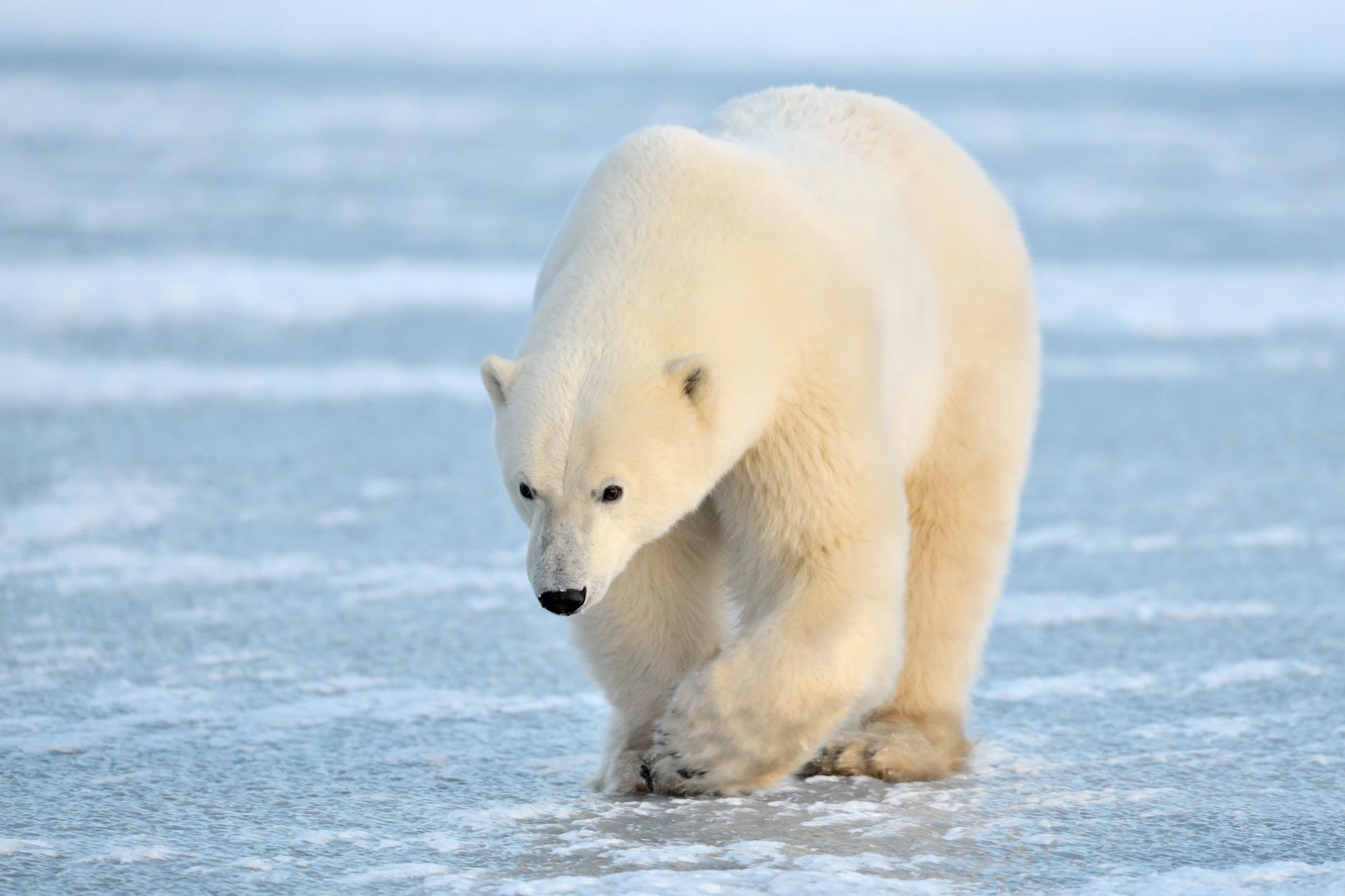Frequently, when looking for answers to human problems, scientists turn to animals who have already evolved their own solutions. So when it came time to develop a heat-trapping fabric, a team of researchers looked to polar bears, whose outer layers allow them to withstand temperatures as low as -50 °F (-46 °C). The secret, they found, has to do with a relationship between the polar bears' unique fur and the black skin that lies beneath it.
Animals are constantly inspiring humans to try to imitate some of their qualities, as scientists seek to develop new products and technologies through a branch of science known as biomimicry. This is especially true in the world of textile development, where we've seen heat-trapping materials inspired by squid, a possible Kevlar replacement inspired by molluscs; a cooling material based on camel fur; and much more.
While polar bears were always a logical place to look for ways to create super-warm fabrics, researchers at the University of Massachusetts Amherst say they are the first in 80 years to create an artificial material that completely mimics the way in which the beasts survive Arctic temperatures.
As part of the research that led to the fabrication of the material, the research team discovered that polar bears have a dual method of grabbing and retaining heat from sunlight. The hairs that comprise their coat (which may look white but are, in fact, translucent) act as a kind of fiber optic delivery system that funnels warmth to the skin that lies beneath. Because polar bear skin is black, it is able to easily soak up the heat. Once the skin is warm, the bears' fur then acts as an insulating layer, keeping the heat against their bodies.
Two previous studies have indicated that polar bear fur is especially good at keeping heat in for two reasons. First, the individual hairs that comprise it are hollow and therefore not good thermal conductors, and second, the hairs are good at backscattering thermal energy instead of letting it bounce out to the surrounding atmosphere.
For the new polar-bear-inspired fabric, the researchers created a base layer composed of nylon coated in a dark polymer known as PEDOT. This coating is well known for its heat-retaining capability and has been employed in smart bricks, better batteries, improved brain-monitoring electrodes and a water-purifying aerogel, to name but a few of its uses.
On top of the PEDOT layer, the scientists added transparent polypropylene threads that could draw visible light downward to heat it up. Tests revealed that the new material, which is already being developed for commercial use by smart textile company Soliyarn, was lighter and better at retaining heat than cotton. In fact, a jacket made from the new material would be 30% lighter versus cotton, and could keep wearers comfortable in temperatures that were 10 °C (18 °F) colder, providing it was bright enough in the surroundings.
Interestingly, the researchers say that they believe the material could be effective at warming wearers via any source of bright light – not just sunshine. Developing clothing that could work this way could alter the amount of energy people would have to use to stay warm indoors when temps get chilly.
"Space heating consumes huge amounts of energy that is mostly fossil fuel-derived," said Wesley Viola, lead author of the research. "While our textile really shines as outerwear on sunny days, the light-heat trapping structure works efficiently enough to imagine using existing indoor lighting to directly heat the body. By focusing energy resources on the 'personal climate' around the body, this approach could be far more sustainable than the status quo."
The research has been published in the journal ACS Applied Material Interfaces.





